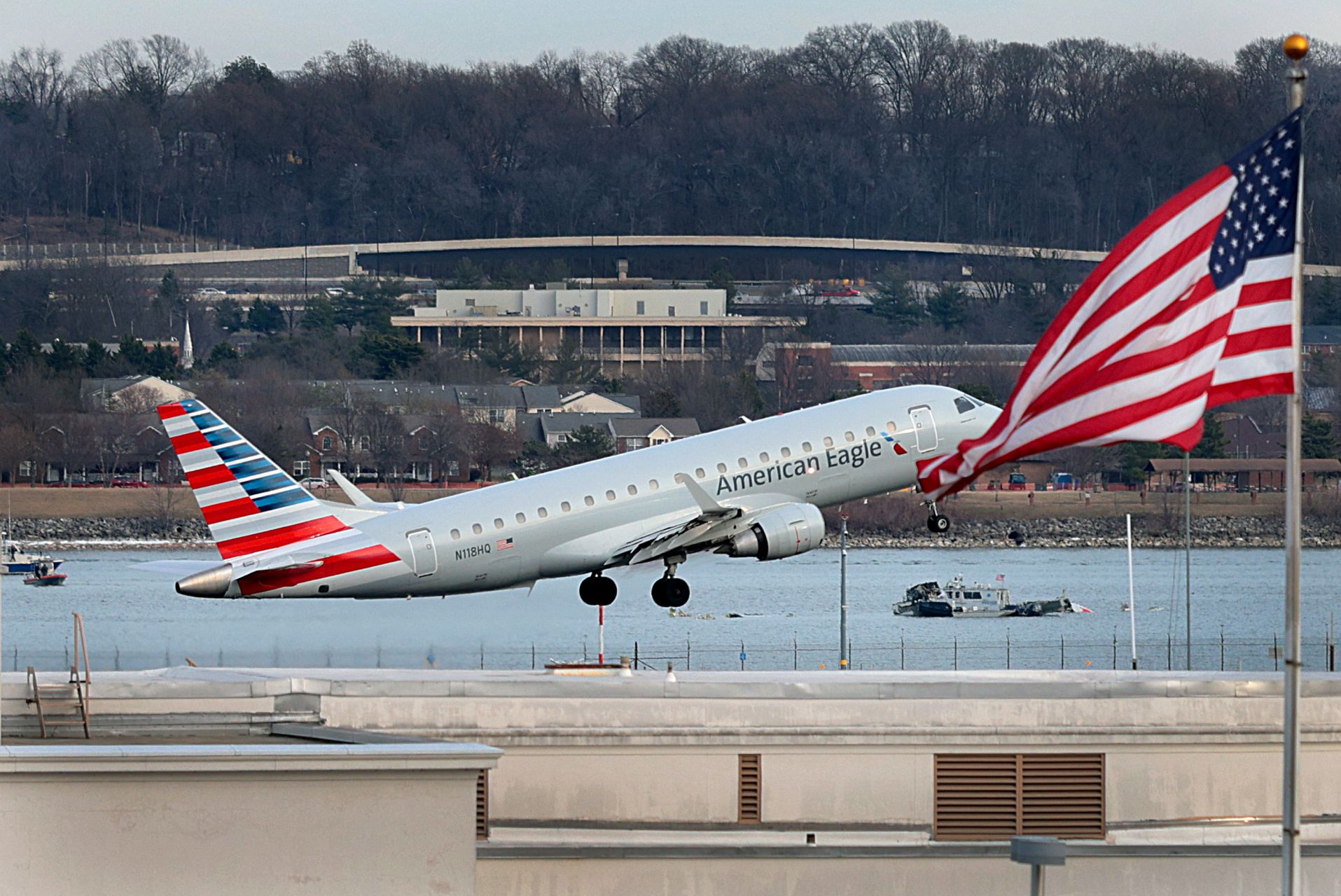- Home
- Middle East
- Collision in Washington Highlights U.S. Air Traffic Control Staffing and Technology Issues

An American Airlines aircraft takes off from Ronald Reagan Washington National Airport as emergency workers continue to search the wreckage of the aircrafts that crashed into the Potomac River yesterday on January 30, 2025 in Arlington, Virginia. ©Kayla Bartkowski / Getty Images via AFP
The collision between a commercial airliner and a military helicopter in Washington on Wednesday night has brought long-standing U.S. air traffic control (ATC) staffing shortages into the spotlight. The incident also underscored concerns over outdated and sometimes obsolete equipment.
Air traffic controllers' unions have repeatedly raised alarms about these issues, including as recently as mid-December during a congressional hearing. Meanwhile, a member of the Government Accountability Office (GAO) warned that the Federal Aviation Administration’s (FAA) technological lag could become critical amid rising air traffic.
"A full upgrade will take many years and require billions of dollars," noted GAO member Kevin Walsh before a Senate committee.
The investigation into the crash, which killed 67 people, has just begun, but criticism of the ATC system surfaced immediately. The agency’s struggles are not new, and periodic calls for privatization have emerged over the years—most recently from conservatives ahead of Donald Trump’s second term.
In late 2024, the right-leaning Cato Institute labeled the ATC system “outdated, mismanaged, and heading for a crisis,” suggesting privatization as a solution under a White House advised by billionaire Elon Musk and focused on reducing public spending.
However, Andy Busch, a professor of American civics at the University of Tennessee, believes the current crisis might instead prompt lawmakers to take a step back and proceed with caution.
Calls for Modernization
Michael McCormick, a former FAA air traffic control official, notes that past privatization efforts failed due to industry opposition.
“This tragic accident will undoubtedly shine a spotlight on air traffic control and could ultimately lead to adequate funding for modernization and maintenance,” he told AFP.
While newer technologies have enabled a shift to satellite-based monitoring, McCormick points out that secondary systems remain underfunded. This contributed to a January 2023 failure that temporarily grounded flights across the U.S.
Chronic staffing shortages also play a role, exacerbated by mandatory retirement at age 55 and recurring government shutdowns that have disrupted hiring. The pandemic further deepened the crisis by halting training for months.
Airlines, eager to expand flight schedules to meet high travel demand, have long criticized the situation. Major hubs like New York and Miami are particularly hard-hit, operating with as little as two-thirds of the necessary controllers.
Easing the Pressure
To mitigate the impact, the FAA relaxed slot restrictions at New York-area airports, allowing airlines to reduce flight frequency in exchange for using larger aircraft. This policy, introduced in summer 2023, has been extended through October 2025—an indication that regulators expect shortages to persist.
In September 2023, air traffic management officials and the National Air Traffic Controllers Association (NATCA) estimated that over 3,000 controllers were missing from airport towers nationwide. By late 2024, the workforce stood at about 10,800. The FAA hired 1,500 controllers in 2023, over 1,800 in 2024, and aims to recruit 2,000 more in 2025, according to the Department of Transportation.
To expand training capacity beyond the FAA’s central facility, Airlines for America is working with universities to increase the number of certified training institutions. Louisiana Tech University recently received approval to launch its first four-year air traffic control program this spring, with plans to expand further.
"The FAA is eager for us to get started," said Matthew Montgomery, head of professional aviation at Louisiana Tech. "They need more people to ease the pressure."
With AFP

Comments